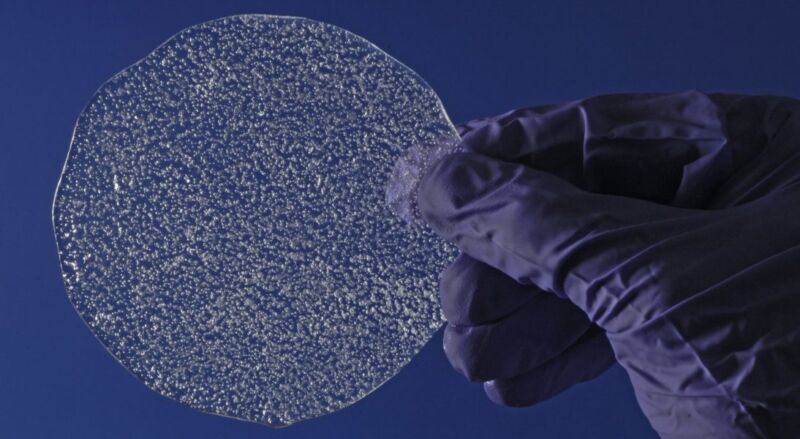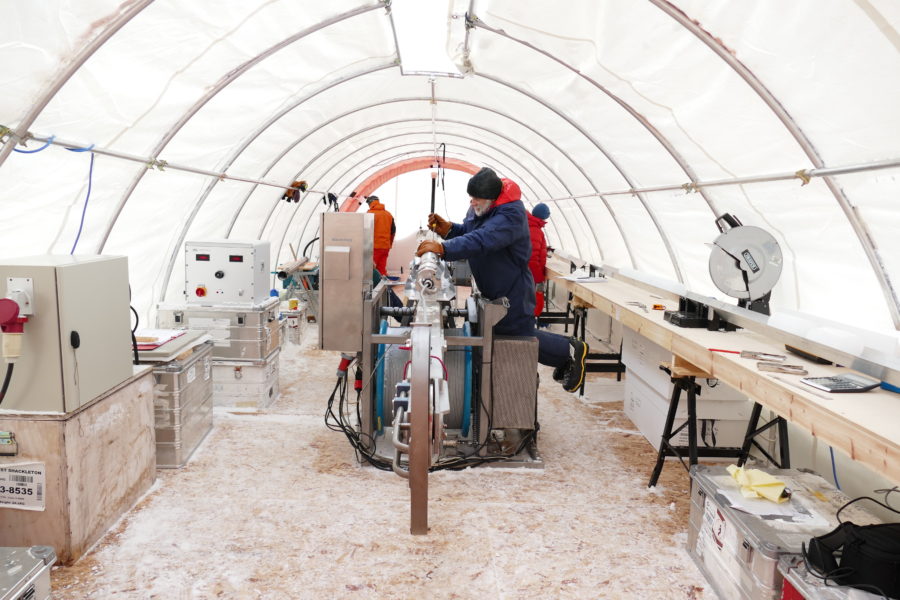
British Antarctic Survey
Did the massive scale of death in the Americas following colonial contact in the 1500s affect atmospheric CO2 levels? That’s a question scientists have debated over the last 30 years, ever since they noticed a sharp drop in CO2 around the year 1610 in air preserved in Antarctic ice.
That drop in atmospheric CO2 levels is the only significant decline in recent millennia, and scientists suggested that it was caused by reforestation in the Americas, which resulted from their depopulation via pandemics unleashed by early European contact. It is so distinct that it was proposed as a candidate for the marker of the beginning of a new geological epoch—the “Anthropocene.”
But the record from that ice core, taken at Law Dome in East Antarctica, shows that CO2 starts declining a bit late to match European contact, and it plummets over just 90 years, which is too drastic for feasible rates of vegetation regrowth. A different ice core, drilled in the West Antarctic, showed a more gradual decline starting earlier, but lacked the fine detail of the Law Dome ice.
Which one was right? Beyond the historical interest, it matters because it is a real-world, continent-scale test of reforestation’s effectiveness at removing CO2 from the atmosphere.
In a recent study, Amy King of the British Antarctic Survey and colleagues set out to test if the Law Dome data is a true reflection of atmospheric CO2 decline, using a new ice core drilled on the “Skytrain Ice Rise” in West Antarctica.
Precious tiny bubbles
In 2018, scientists and engineers from the British Antarctic Survey and the University of Cambridge drilled the ice core, a cylinder of ice 651 meters long by 10 centimeters in diameter (2,136 feet by 4 inches), from the surface down to the bedrock. The ice contains bubbles of air that got trapped as snow fell, forming tiny capsules of past atmospheres.
The project’s main aim was to investigate ice from the time about 125,000 years ago when the climate was about as warm as it is today. But King and colleagues realized that the younger portion of ice could shed light on the 1610 CO2 decline.
“Given the resolution of what we could obtain with Skytrain Ice Rise, we predicted that, if the drop was real in the atmosphere as in Law Dome, we should see the drop in Skytrain, too,” said Thomas Bauska of the British Antarctic Survey, a co-author of the new study.
The ice core was cut into 80-centimeter (31-inch) lengths, put into insulated boxes, and shipped to the UK, all the while held at -20°C (-4°F) to prevent it from melting and releasing its precious cargo of air from millennia ago. “That’s one thing that keeps us up at night, especially as gas people,” said Bauska.
In the UK they took a series of samples across 31 depth intervals spanning the period from 1454 to 1688 CE: “We went in and sliced and diced our ice core as much as we could,” said Bauska. They sent the samples, still refrigerated, off to Oregon State University where the CO2 levels were measured.
The results didn’t show a sharp drop of CO2—instead, they showed a gentler CO2 decline of about 8 ppm over 157 years between 1516 and 1670 CE, matching the other West Antarctic ice core.
“We didn’t see the drop,” said Bauska, “so we had to say, OK, is our understanding of how smooth the records are accurate?”

A tent on the Antarctic ice where the core is cut into segments for shipping.
British Antarctic Survey
To test if the Skytrain ice record is too blurry to show a sharp 1610 drop, they analyzed the levels of methane in the ice. Because methane is much less soluble in water than CO2, they were able to melt continuously along the ice core to liberate the methane and get a more detailed graph of its concentration than was possible for CO2. If the atmospheric signal was blurred in Skytrain, it should have smoothed the methane record. But it didn’t.
“We didn’t see that really smoothed out methane record,” said Bauska, “which then told us the CO2 record couldn’t have been that smoothed.”
In other words, the gentler Skytrain CO2 signal is real, not an artifact.
Does this mean the sharp drop at 1610 in the Law Dome data is an artifact? It looks that way, but Bauska was cautious, saying, “the jury will still be out until we actually get either re-measurements of the Law Dome, or another ice core drilled with a similarly high accumulation.”




















+ There are no comments
Add yours